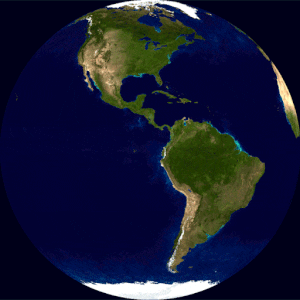The first type of movement is the axial, or
axis, rotation. This is the spinning movement of the actual planet and is
similar to a spinning top.
On Earth, it takes slightly less than 24 hours
(23.934 hours) to rotate on its axis and this is one day. We round it up to a
full 24 hours. And that can be broken down into 24 hours of 60 minutes in
length which can also be divided into 60 seconds in every minute.
The axis rotation speed across the planets
varies and this is why the ages in the boxes above are different. The speed at
which a planet rotates on its axis is determined by a number of complexes
factors, including how fast the original matter was “spinning” when the planets
were formed 4.5 billion years ago.
Jupiter, for example, has the fastest rotation
speed of all the planets and takes just 9.92496 Earth hours to complete a full
rotation on its axis. By comparison, Venus takes 243.018 days to complete one
rotation.
 |
| Earth to rotate on its axis |